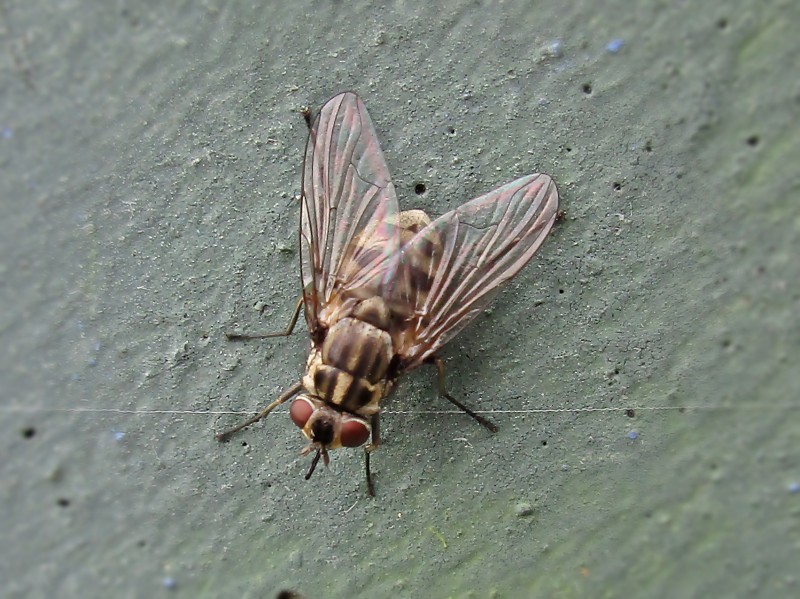Stable Fly
Description:
 Stable flies also known as "biting flies" can deliver a painful bite. They bite people, livestock, pets and other mammals. The bites may feel like a needle stab and typically occur around the ankles and lower parts of the legs. Stable flies are very persistent when searching for a blood meal. They require the blood meal for reproduction. Stable flies overwinter in breeding sites and emerge the following spring as adults.
Stable flies also known as "biting flies" can deliver a painful bite. They bite people, livestock, pets and other mammals. The bites may feel like a needle stab and typically occur around the ankles and lower parts of the legs. Stable flies are very persistent when searching for a blood meal. They require the blood meal for reproduction. Stable flies overwinter in breeding sites and emerge the following spring as adults.
Photo attribution link: By Bj.schoenmakers (Own work) [CC0], via Wikimedia Commons
Appearance:
The length of an adult stable fly is typically 5–8 mm. They are gray in color with 4 dark stripes on the thorax and several dark spots on the top of the abdomen having a slightly wider and spotted abdomen.
Lifecycle:
Stable flies breed in moist, decaying organic matter. The adult female lives for four to six weeks in the laboratory but around seven to ten days in the field, and during this time she lays multiple clutches of eggs. Each clutch may contain 60-130 eggs, which are laid in small groups within a suitable substrate. Each female fly may lay up to 800 eggs in her lifetime, with each clutch requiring a separate blood meal. Eggs hatch in 12 to 24 hours into first instar larvae, which feed and mature through three instars in 12 to 13 days at the optimum breeding site temperature of 27°C. Third instar larvae transform to pupae within the puparia. The adults develop inside and then emerge from the puparia. The average stable fly life cycle in the field ranges from 12–20 days depending on the environmental conditions, but is usually around 28 days. Adults can fly within one hour post-emergence, and will be ready to mate three to five days later. Once mated, the female will start to lay eggs five to eight days post-emergence.
Habits:
Stable flies prefer to feed outdoors and rarely are found feeding or resting indoors. These flies are strong fliers and dispersion from one livestock facility to the next is common. They remain active into October, but the larval development slows as autumn temperatures decrease.